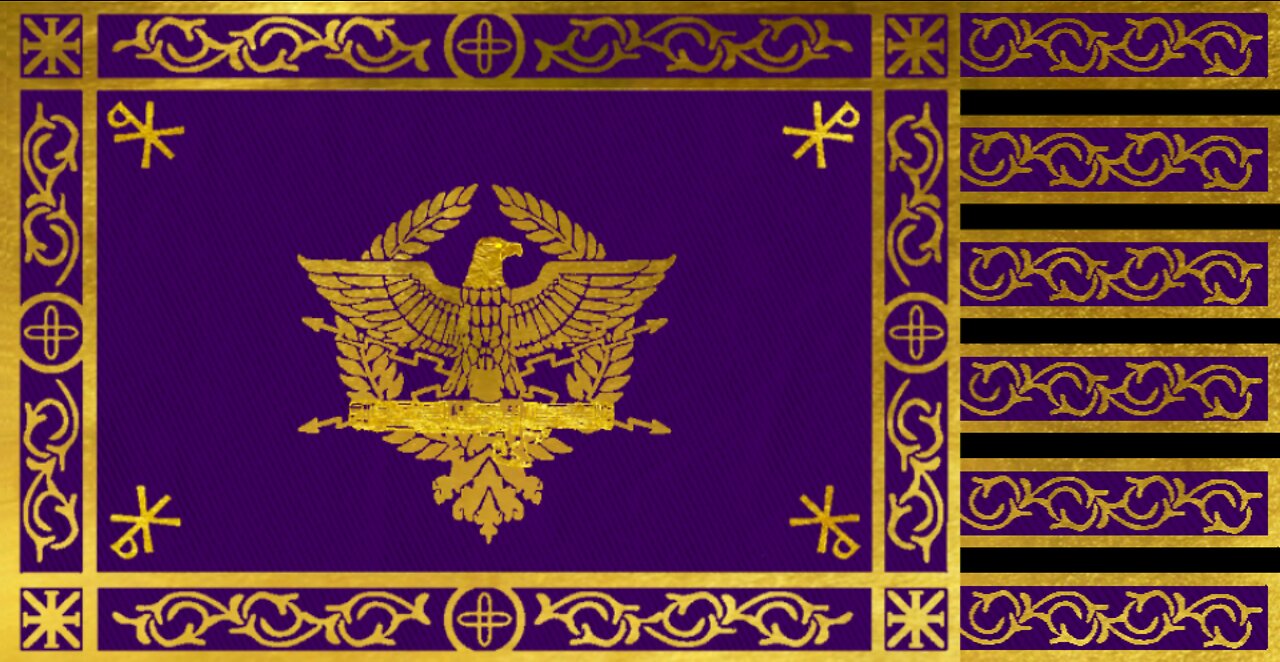Premium Only Content

#Dominator: Άρχοντας του τετάρτου και ημίσεος του τετάρτου πάσης Ρωμανίας
Dominator quartae et dimidiae partis totius Romaniae : Άρχοντας του τετάρτου και ημίσεος του τετάρτου πάσης Ρωμανίας
https://www.zazzle.com/dominator_venetian_byzantine_throw_pillow-189500142230344652
http://zazzle.com/ProVaticanus
There had been a long trading relationship between the Venetians and the Eastern Roman Byzantines before, starting with the Byzantine–Venetian treaty of 1082. However, with the chaotic events of 1204, the relationship between the two powers had greatly changed. In order to undercut the Venetian military support from the Latin Empire, the major inheritor of Constantinople, Theodore Lascaris, signed a trade agreement with Venice in August 1219 that provided freedom of trade and duty-free imports to the Venetians throughout the Nicaean Empire. In addition to the trading rights, the Doge of Venice, Pietro Ziani, was recognized the titles of Despot and 'Lord of one-quarter and one-eighth of the Empire of Romania' (dominus quartae partis et dimidiae totius Imperii Romaniae), that he had claimed after 1204. The Latin text of the treaty was published in the collection of Venetian diplomatic documents compiled by Gottlieb Tafel and Georg Thomas for the Imperial Academy of Sciences in Vienna.
In March 1204, shortly before the sack of Constantinople in April, the Crusaders made a preliminary arrangement on the partition of the Byzantine territories between themselves. This text, concluded between the principal leaders of the Crusade, the Doge of Venice Enrico Dandolo, Marquess Boniface of Montferrat, Count Baldwin of Flanders, and Count Louis I of Blois, has been preserved among the letters of Pope Innocent III. According to its stipulations, the Venetians would retain their previous privileges granted by the Byzantine emperors, and a common committee, composed in equal numbers of Venetians and Crusaders, would elect an emperor for the Latin Empire to be established after the conquest of the city. The Latin Emperor would receive one quarter of all territories, as well as the palaces of Blachernae and Boukoleon in the city. The remaining three quarters of the Byzantine territories would be divided equally between Venice and the other Crusaders. On 9 May, Baldwin of Flanders was elected Latin Emperor, in place of the previous leader of the Crusade, Boniface of Montferrat. According to the Crusader and chronicler Geoffrey of Villehardouin, by previous agreement, Boniface should receive the territories lying beyond the Bosporus and Marmara Sea, "towards Turkey", as well as "the isle of Greece". However, to placate Boniface, Baldwin agreed to assign to him the Kingdom of Thessalonica instead.[5] The agreement, which was promulgated either in late September or early October 1204 (according to the opinions of W. Heyd, Dionysios Zakythinos, and A. Carile) or (according to Nikolaos Oikonomides) immediately after the sack in April–May 1204, was drafted by a 24-man committee consisting of 12 Venetians and 12 representatives of the other Crusader leaders. The Venetians played a major role in the proceedings, as they had first-hand knowledge of the area, and many of the final text's provisions can be traced to the imperial chrysobull granted to Venice in 1198 by Alexios III Angelos. It gave the Latin Emperor direct control of one fourth of the former Byzantine territory, to Venice three eighths – including three eighths of the city of Constantinople, with Hagia Sophia – and the remaining three eighths were apportioned among the other Crusader chiefs. Through this division, Venice became the chief power in Latin Romania, and the effective power behind the Latin Empire, a fact clearly illustrated by the lofty title its Doge acquired: Dominator quartae et dimidiae partis totius Romaniae ("Lord of a quarter and a half quarter of all of Romania"). The treaty survives in a number of manuscripts, all from Venice: the Liber Albus (fols. 34ff.), the Liber Pactorum (Vol. I, fols. 246ff. and Vol. II, fols. 261ff.), the Codex Sancti Marci 284, folio 3, and the Muratorii codices Ambrosiani I and II. The first critical edition of the treaty was published in the collection of Venetian diplomatic documents compiled.
#Doge #Byzantine #RomanEmpire #Venice #Constantinople #LatinEmpire #Orthodoxy #EasternRomanHistory #SPQR #Venezia #Latin #Greek #CrusaderKings #Catholicism #History #MIL #SuccessorStates #Romania #Roma #RomanReigns #Dogecoin #Dogecoinarmy #Domination #DogeNFTs
Ago tibi gratias Deo per instrumenta de "Egiuxz" pro bono rei publicae.
-
 6:09
6:09
ProVaticanus
1 month agoDVX DALMATIÆ
211 -
 LIVE
LIVE
John Crump Live
32 minutes agoYes I talked To The ATF
278 watching -
 LIVE
LIVE
Amish Zaku
3 hours agoVerDanceKey Warzone - Birthday Fun
46 watching -
 LIVE
LIVE
NeoX5
49 minutes agoKhazan: The Road Less Taken | Part 5-2 | Rumble Studio | Rumble Gaming
57 watching -
 LIVE
LIVE
TwinGatz
6 hours ago🔴LIVE - He Is Doing His Best | ARMA Reforger
73 watching -
 54:40
54:40
LFA TV
10 hours agoSee God in the Trade War | TRUMPET DAILY 4.7.25 7PM
19K -
 1:18:30
1:18:30
Sarah Westall
3 hours agoNew Study: EMFs Literally Put You into a Brainwave Cage; Reclaiming your Mind w/ Ian & Philipp
25.6K5 -
 35:54
35:54
SantaSurfing
4 hours ago4/7/2025 - Trump Tariff impacts - he wants no Capital Gains Tax! Inflation falls to 1.22%!
11.7K14 -
 59:17
59:17
We Like Shooting
15 hours ago $0.82 earnedDouble Tap 404 (Gun Podcast)
8.96K -
 LIVE
LIVE
ZWOGs
8 hours ago🔴LIVE IN 1440p! - GRAPHIC DESIGN, Schedule 1, TARKOV, GTAV RP!! | Dwindle Digby | - Come Hang Out!
118 watching